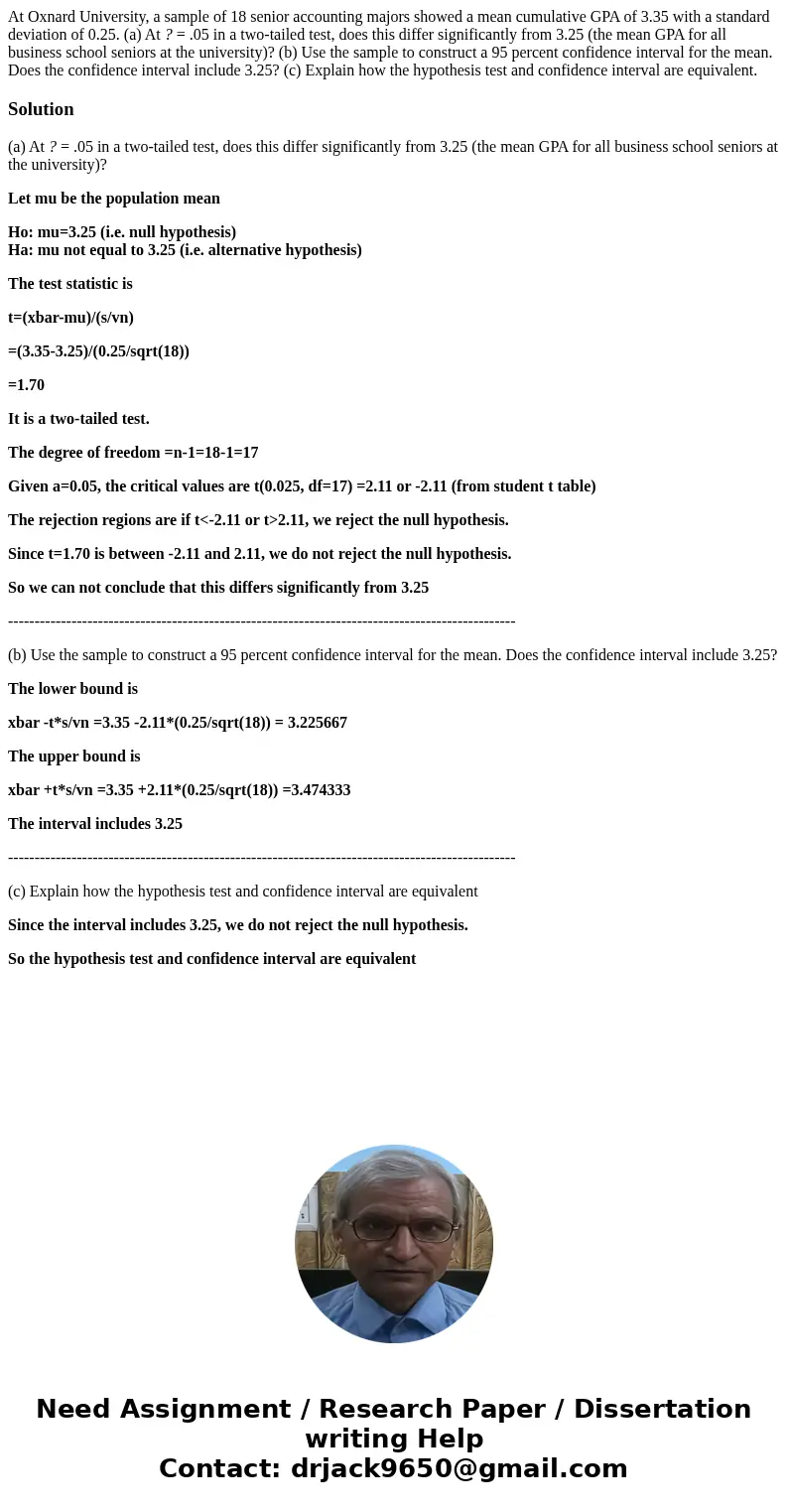At Oxnard University a sample of 18 senior accounting majors
At Oxnard University, a sample of 18 senior accounting majors showed a mean cumulative GPA of 3.35 with a standard deviation of 0.25. (a) At ? = .05 in a two-tailed test, does this differ significantly from 3.25 (the mean GPA for all business school seniors at the university)? (b) Use the sample to construct a 95 percent confidence interval for the mean. Does the confidence interval include 3.25? (c) Explain how the hypothesis test and confidence interval are equivalent.
Solution
(a) At ? = .05 in a two-tailed test, does this differ significantly from 3.25 (the mean GPA for all business school seniors at the university)?
Let mu be the population mean
Ho: mu=3.25 (i.e. null hypothesis)
Ha: mu not equal to 3.25 (i.e. alternative hypothesis)
The test statistic is
t=(xbar-mu)/(s/vn)
=(3.35-3.25)/(0.25/sqrt(18))
=1.70
It is a two-tailed test.
The degree of freedom =n-1=18-1=17
Given a=0.05, the critical values are t(0.025, df=17) =2.11 or -2.11 (from student t table)
The rejection regions are if t<-2.11 or t>2.11, we reject the null hypothesis.
Since t=1.70 is between -2.11 and 2.11, we do not reject the null hypothesis.
So we can not conclude that this differs significantly from 3.25
------------------------------------------------------------------------------------------------
(b) Use the sample to construct a 95 percent confidence interval for the mean. Does the confidence interval include 3.25?
The lower bound is
xbar -t*s/vn =3.35 -2.11*(0.25/sqrt(18)) = 3.225667
The upper bound is
xbar +t*s/vn =3.35 +2.11*(0.25/sqrt(18)) =3.474333
The interval includes 3.25
------------------------------------------------------------------------------------------------
(c) Explain how the hypothesis test and confidence interval are equivalent
Since the interval includes 3.25, we do not reject the null hypothesis.
So the hypothesis test and confidence interval are equivalent

 Homework Sourse
Homework Sourse